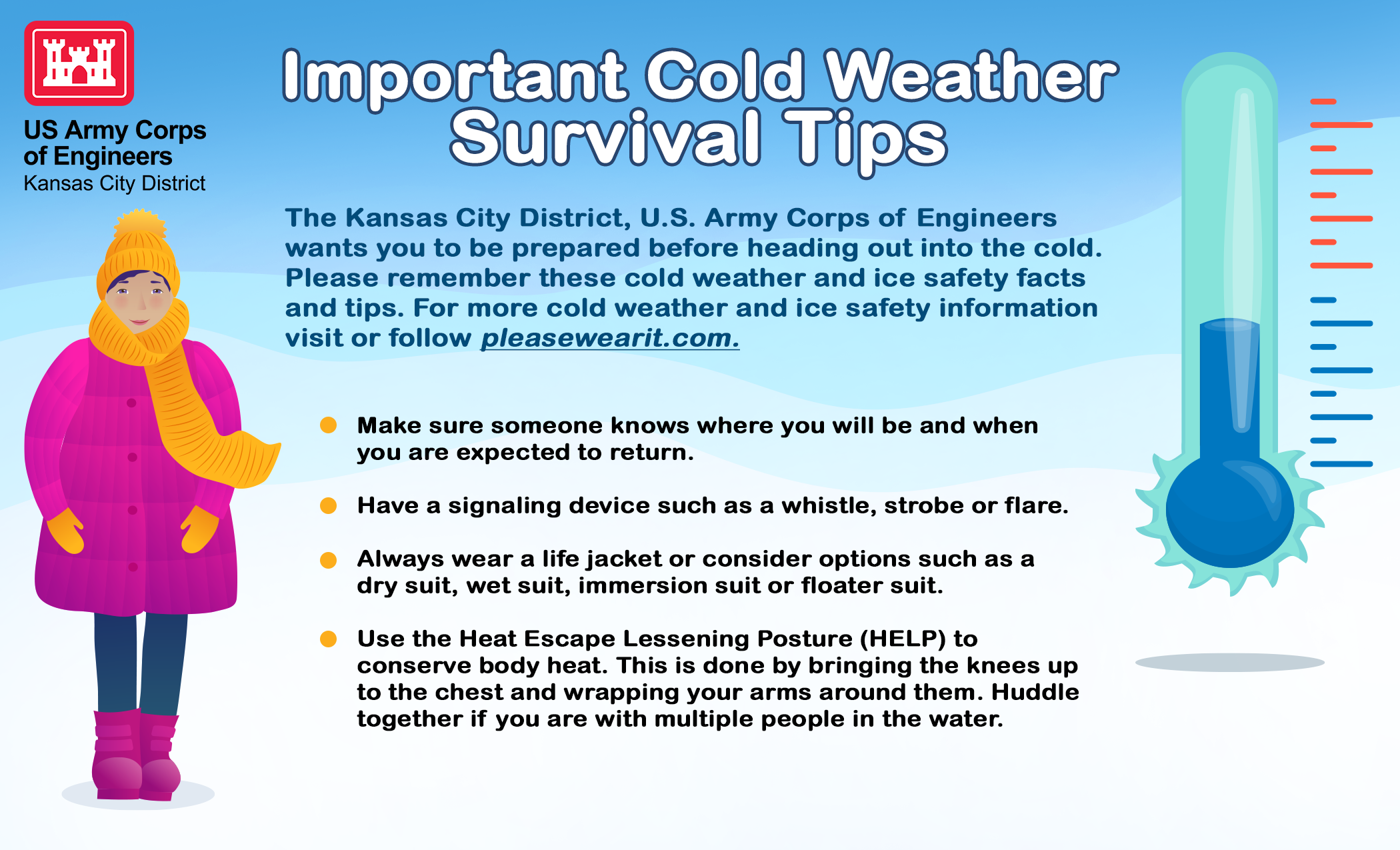
USACE
KANSAS CITY – The U.S. Army Corps of Engineers (USCE), Kansas City District reminds all to be prepared for cold water emergencies on or around lakes or rivers this winter. If you fall into the water or through ice, it is critical to get out of the cold water as quickly as possible since you can lose your ability to swim within minutes as hypothermia begins.
If you find yourself in cold water by falling through ice, turn towards the direction you came from, because that is most likely to have the thickest ice. Kick your legs to “swim” out horizontally and get your body as far out onto the ice as you can. Use your sharp objects to pull yourself out with your arms onto your elbows. You may need to wait briefly for some water to drain from your clothes in order to be able to pull yourself out farther. Once you’re out, stay lying flat and roll away from the hole to keep your weight spread out or you may fall through again.
While we don’t encourage recreating on ice, we want you to be prepared before heading out into the cold weather and to understand cold water facts and tips. For more water safety information visit or follow pleasewearit.com.
FACTS
- Nearly 9 out of every 10 water-related deaths involved individuals not wearing a life jacket (per USACE 10-year average statistics).
- It only takes 20 seconds for a child to drown.
- It only takes 60 seconds for an adult to drown.
- Cold water immersion starts with shock, gasping for air and inhaling water as the human body cools 25 times faster in cold water than air.
- Next is failure to swim, as you lose strength and exhaustion sets in.
- Next is hypothermia as your body starts to shut down.
- If rescuers make it to you, you are lucky but still have a tough fight ahead.
- Don’t just remember to take your life jacket, remember to wear it no matter the season.
TIPS
- Make sure someone knows where you will be and when you are expected to return.
- Have a signaling device such as a whistle, strobe or flare.
- Always wear a life jacket or consider options such as a dry suit, wet suit, immersion suit or floater suit.
- Use the Heat Escape Lessening Posture (HELP) to conserve body heat-This is done by bringing the knees up to the chest and wrapping your arms around them. Huddle together if you are with multiple people in the water.
Please recreate responsibly and return home safely.


